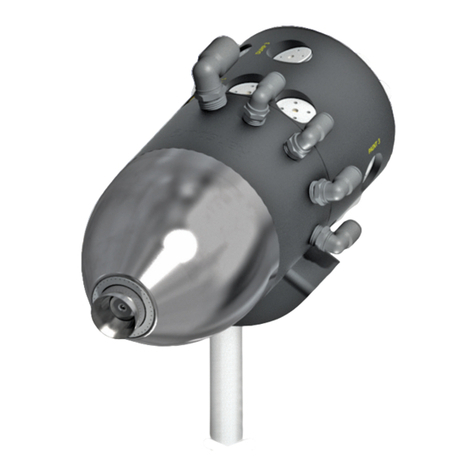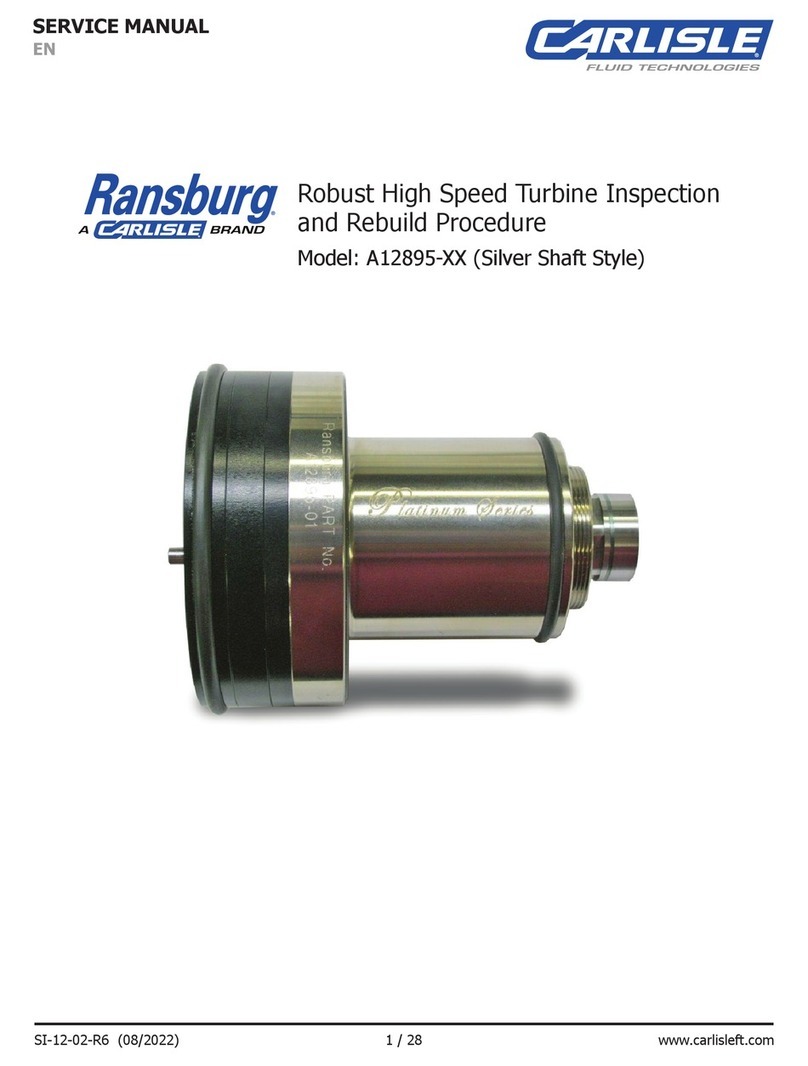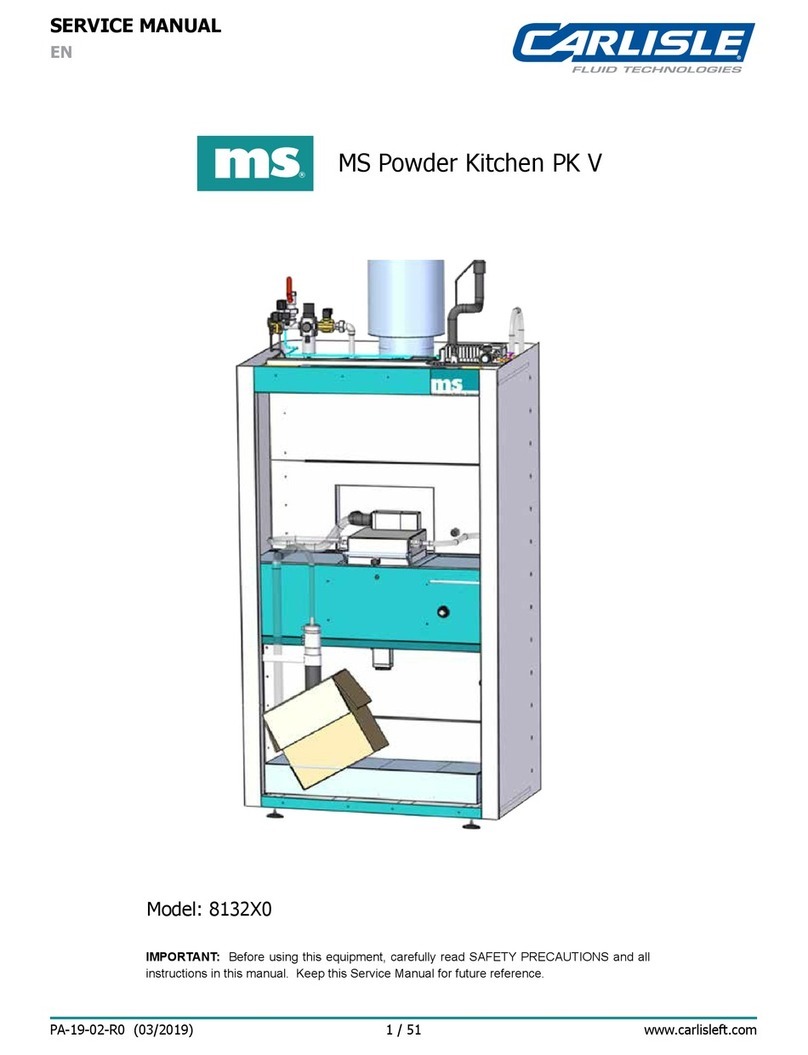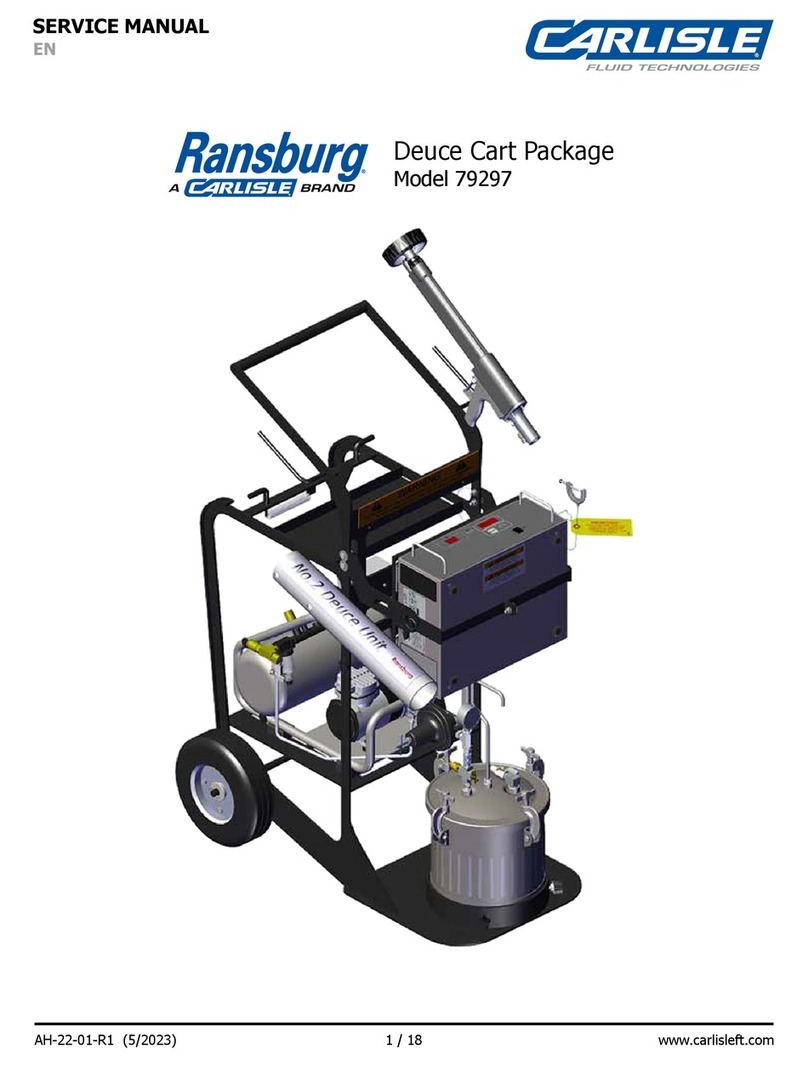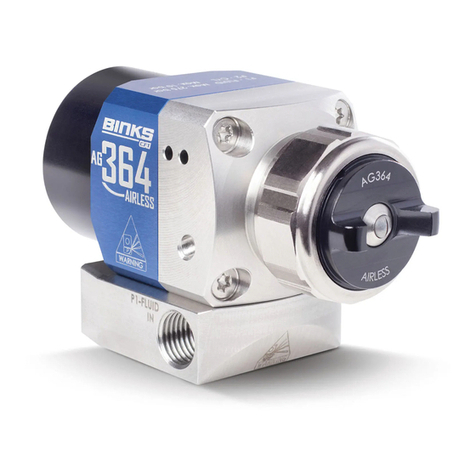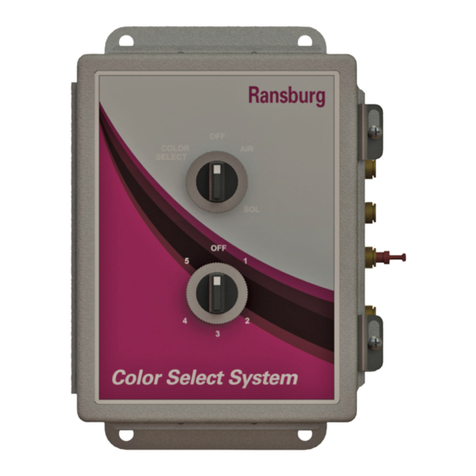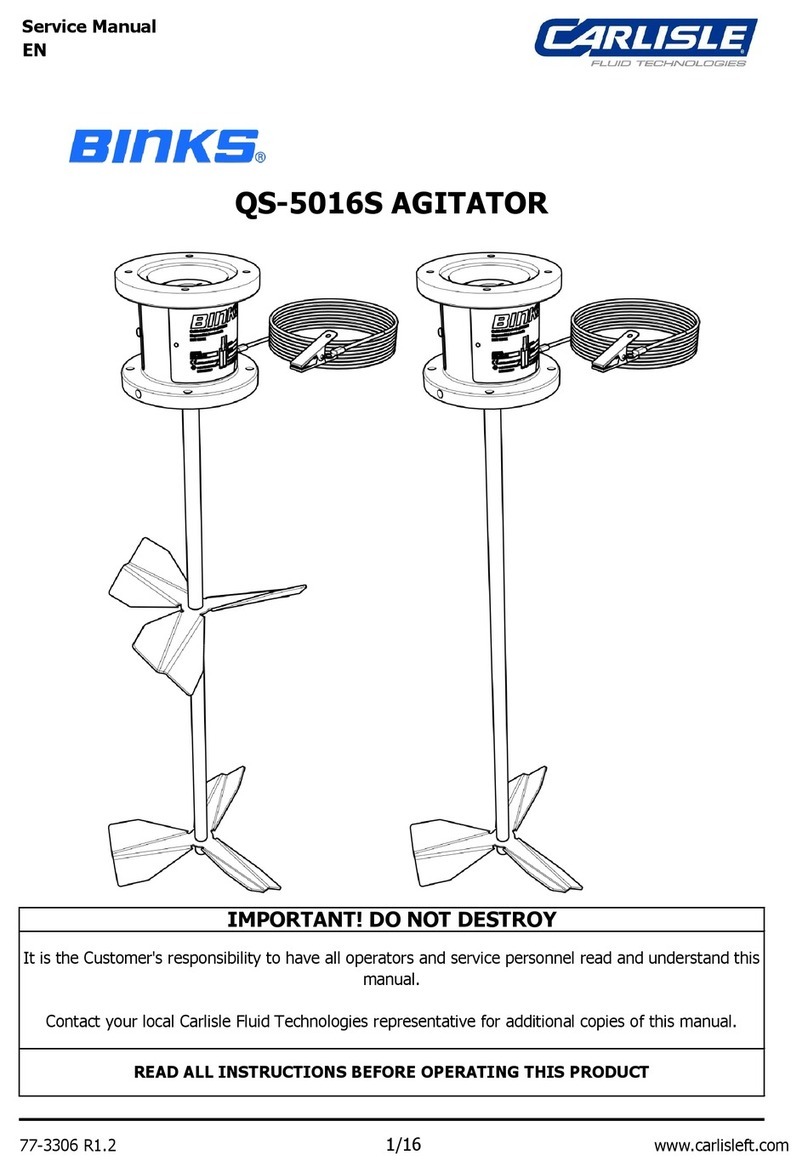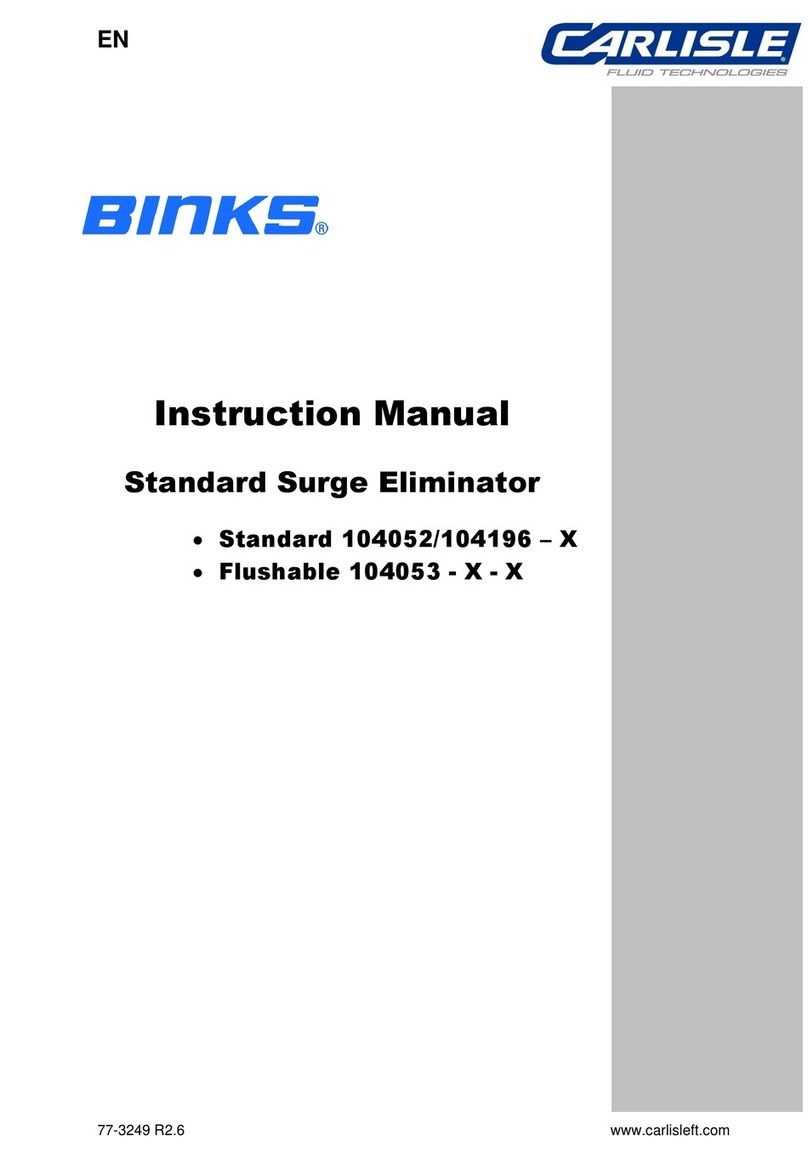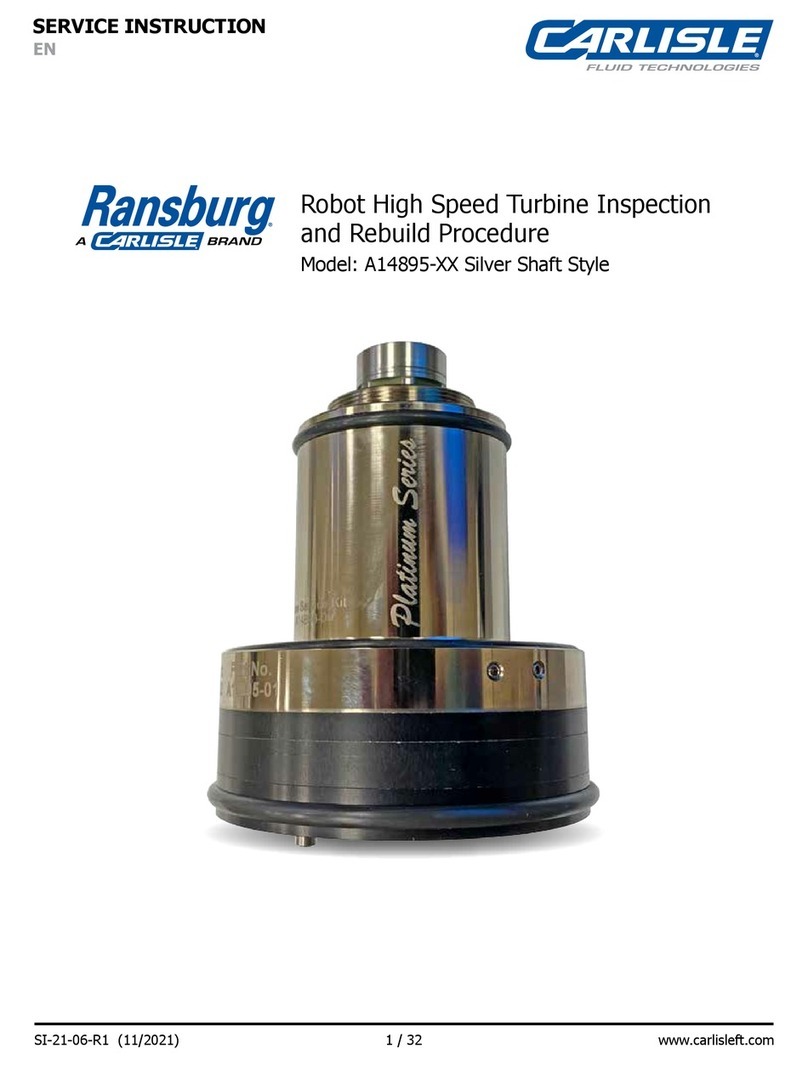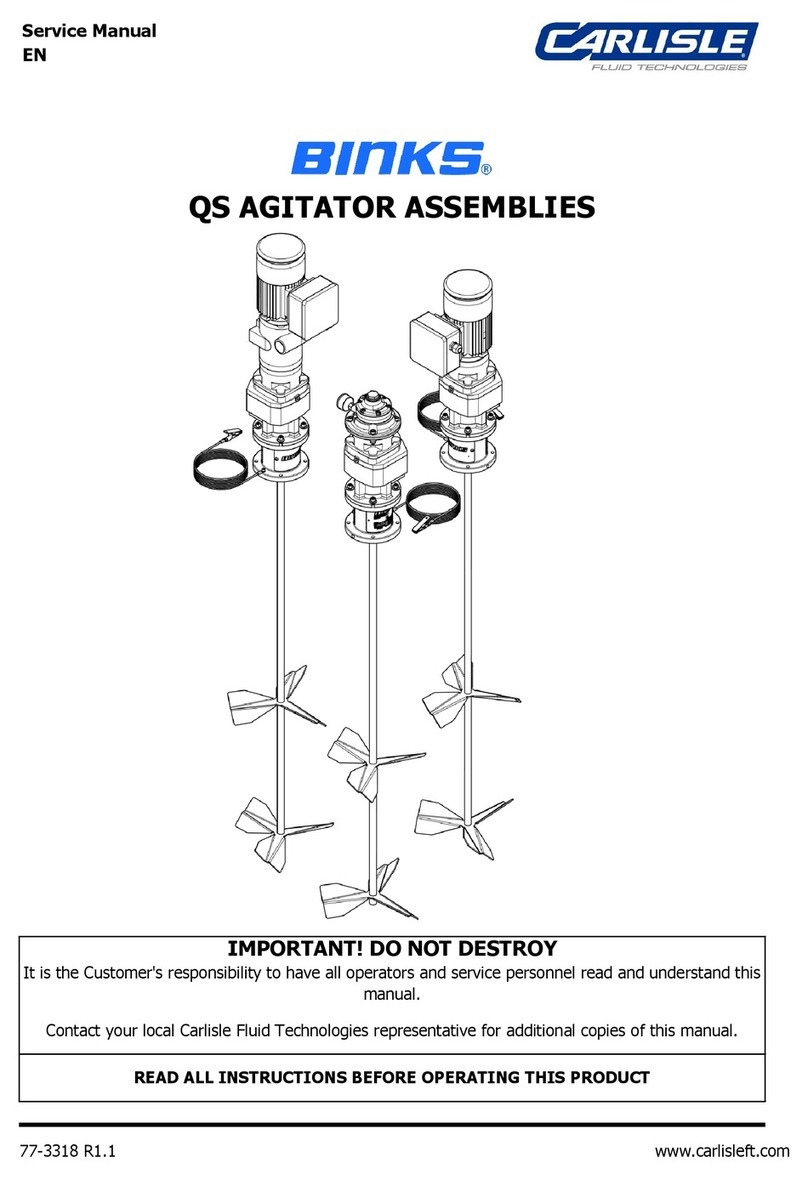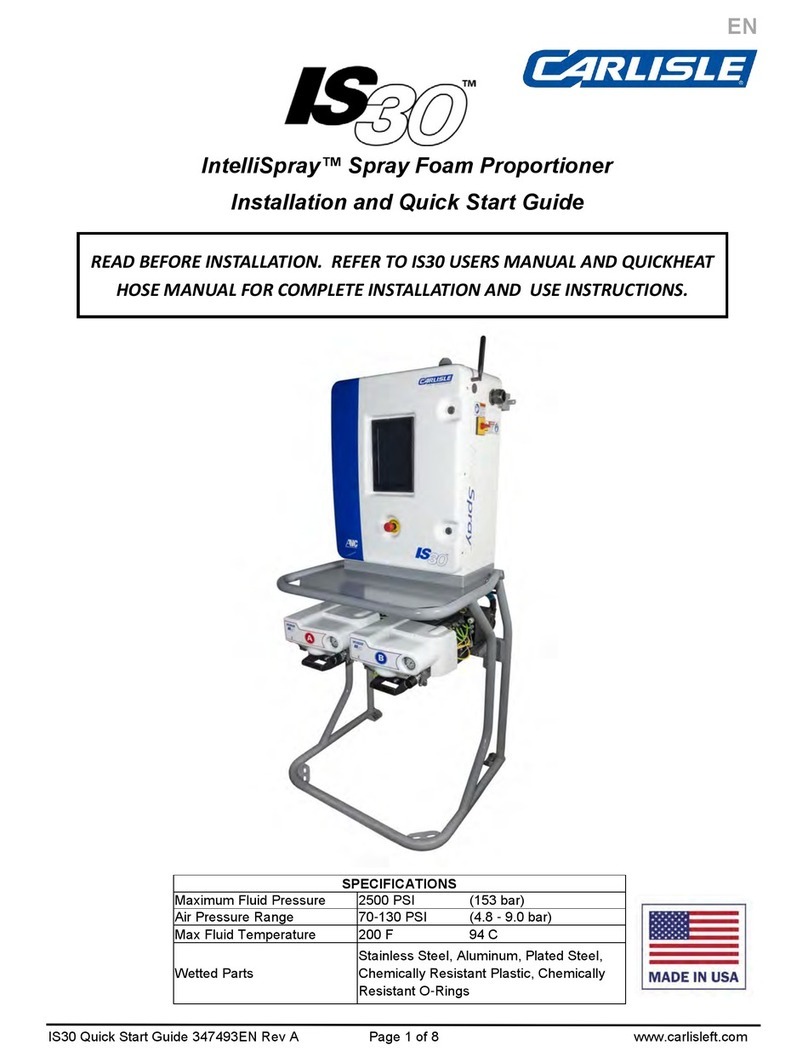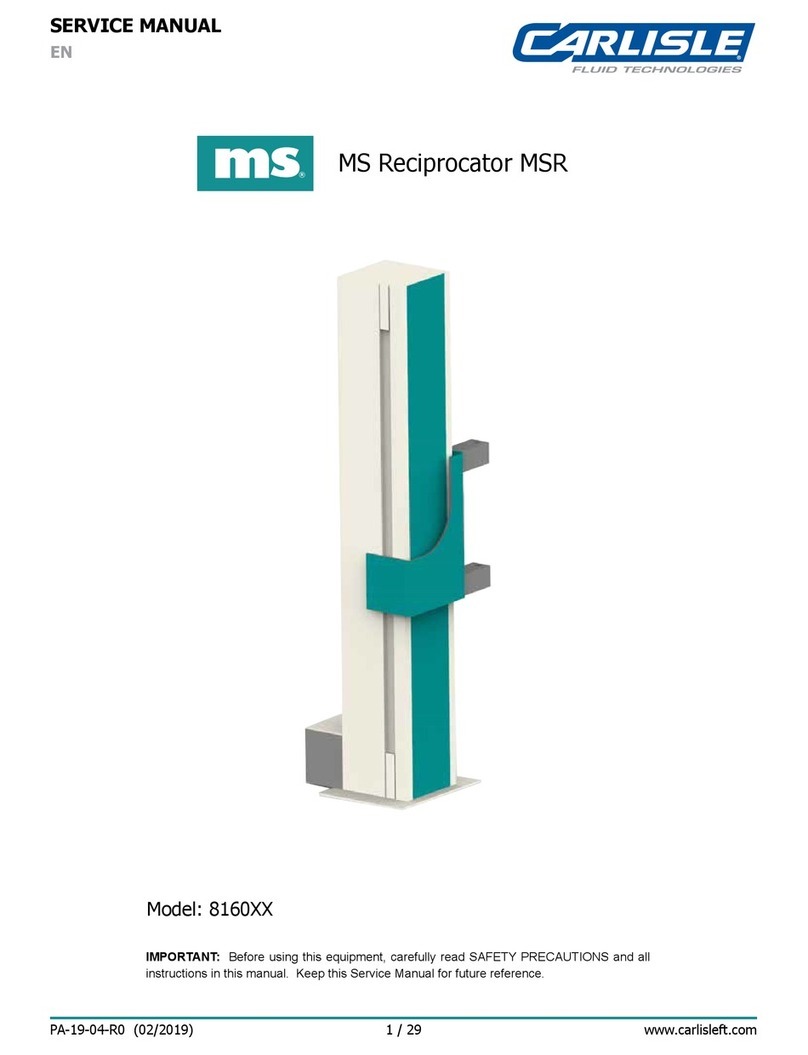
SAFETY
EN
AA-07-02-R3 (01/2023)9 / 66www.carlisleft.com
AREA
Tells where hazards
may occur.
HAZARD
Tells what the hazard is. SAFEGUARDS
Tells how to avoid the hazard.
High voltage equipment is
utilized in the process. Arcing
in the vicinity of ammable or
combustible materials may occur.
Personnel are exposed to high
voltage during operation and
maintenance.
Protection against inadvertent arcing
that may cause a re or explosion
is lost if safety circuits are disabled
during operation.
Frequent power supply shut-down
indicates a problem in the system
which requires correction.
An electrical arc can ignite coating
materials and cause a re or
explosion.
Electrical Discharge
Electrical
Equipment
Follow the requirements of the Safety Data Sheet supplied
by coating material manufacturer.
Adequate exhaust must be provided to keep the air free of
accumulations of toxic materials. Reference EN 12215 or
applicable code.
Use a mask or respirator whenever there is a chance of
inhaling sprayed materials. The mask must be compatible
with the material being sprayed and its concentration.
Equipment must be as prescribed by an industrial hygienist
or safety expert, and be NIOSH approved.
Chemical HazardToxic
Substances Certain materials may be
harmful if inhaled, or if there
is contact with the skin.
Unless specically approved for use in hazardous locations,
the power supply, control cabinet, and all other electrical
equipment must be located outside or applicable country
codes, hazardous areas in accordance with NFPA 33 and
EN 16985.
Turn the power supply OFF before working on
the equipment.
Test only in areas free of ammable or combustible material.
Testing may require high voltage to be on, but only
as instructed.
Production should never be done with the safety
circuits disabled.
Before turning the high voltage on, make sure no objects
are within the sparking distance.
Spray applicators require that aluminum inlet ttings be
replaced with stainless steel.
Aluminum is widely used in other spray application
equipment - such as material pumps, regulators, triggering
valves, etc. Halogenated hydrocarbon solvents must
never be used with aluminum equipment during spraying,
ushing, or cleaning. Read the label or data sheet for the
material you intend to spray. If in doubt as to whether or not
a coating or cleaning material is compatible, contact your
coating supplier. Any other type of solvent may be used
with aluminum equipment.
Halogenated hydrocarbon
solvents for example:
methylene chloride and 1,1,1, -
Trichloroethane are not chemically
compatible with the aluminum that
might be used in many system
components. The chemical
reaction caused by these solvents
reacting with aluminum can
become violent and lead to an
equipment explosion.
Explosion Hazard —
Incompatible Materials
Spray Area
Return To Contents
